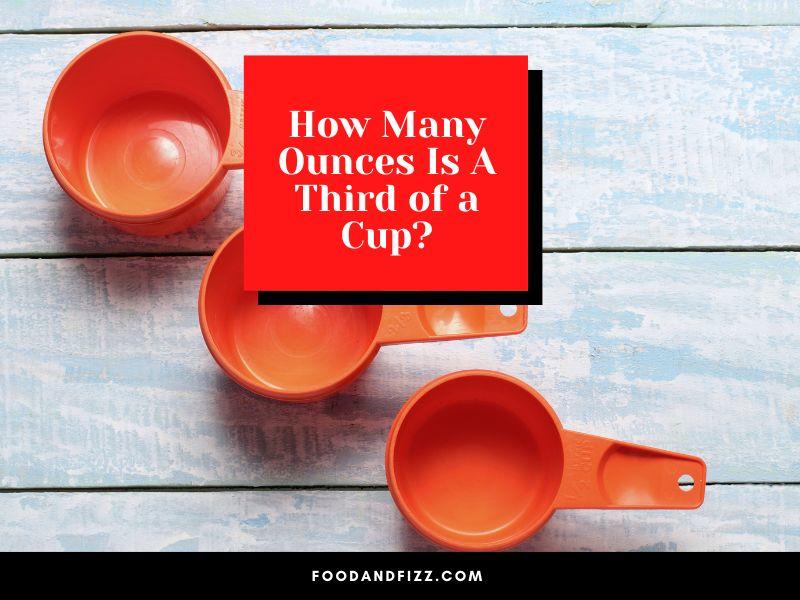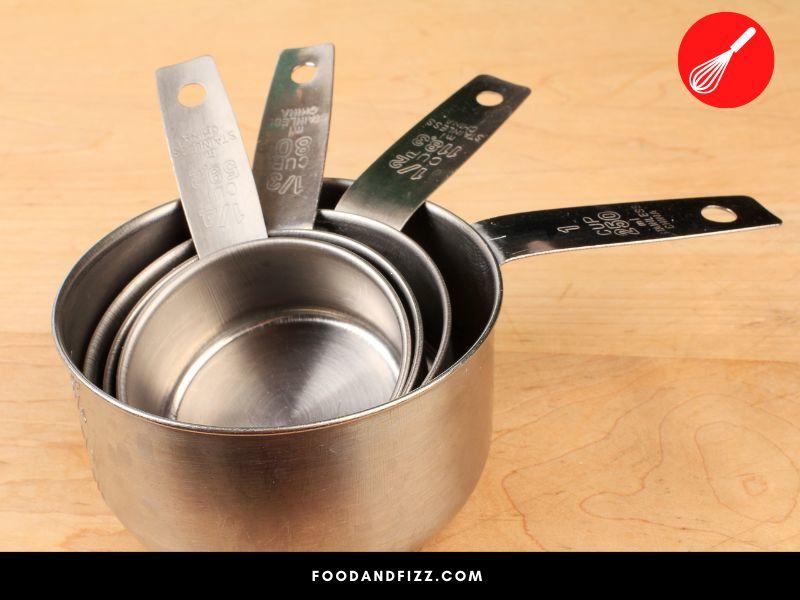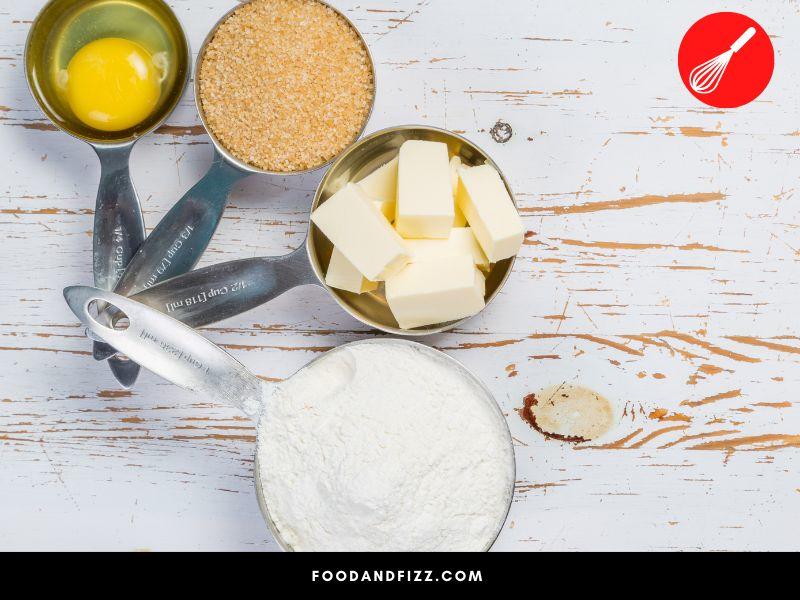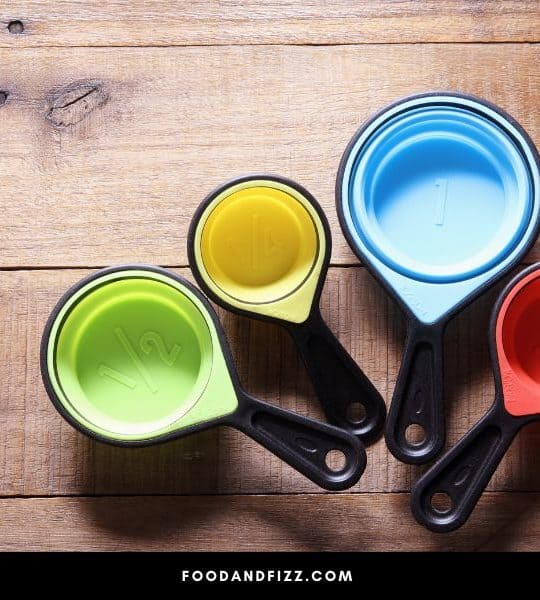How Many Ounces is a Third of a Cup? There are times in a cook’s life, whether you are a home cook, or a professional, when you can “wing it” with ingredients, by adding them slowly and tasting the food constantly. Good cooks are comfortable with doing a lot of cooking by instinct alone.
It must be remembered though that not all recipes can be done by instinct. Some recipes such as puddings, cakes, and other desserts need specific amounts of ingredients.
A measurement like “one third of a cup” can be vague because it can vary in amount from ingredient to ingredient. It is important to know the equivalent in ounces to ensure that your recipe, especially if it is something like a cake where exact measurement is key, will turn out well.
How Many Ounces Is A Third of a Cup?
In general, a third of a cup is equal to approximately 2.85 ounces, depending on the cup. However, this is not always the case as different ingredients weigh differently. To accurately determine how many ounces are in a third of a cup, you have to use a cooking scale to weigh ingredients, know the nature of the ingredients and measure them multiple times.

Baking is more of a chemistry process than other types of cooking which are why pastry chefs are employed by restaurants.
According to the Weizmann Institute of Science, “baking is an exacting science in the same category as a scientific experiment.” (1)
When cooking, a little too much or too little of something can be easily remedied. In baking, this is not so as a cake will not rise or a pudding will not set up.
This leads all good cooks to want to know exactly how to measure ingredients correctly, and knowing the ounces in a cup is crucial. There are solid and liquid ingredients and different ways of determining the exactness of the ounces in a third of a cup.
How Many Ounces Is A Third of a Cup?
There are generally four sizes of measuring cups sold. One cup, a half-cup, a third of a cup, and a fourth of cup sizes. Most cooks buy a set that contains all four to cut back on measuring.
Some only buy one large measurement cup of approximately 8 ounces, while some confident cooks purchase 4 cups or pint measurement cups.
It is hard to determine by ounces many times how much is in a measuring cup, Liquids and solids can measure out differently and many good cooks prefer to go by weight measurements rather than ounces.
For example, when measuring brown sugar, it is usually patted down into the cup, while milk, which is a liquid is not. Honey can be very difficult to measure in a cup as some kinds of honey weigh more than others.
For a third of a cup, the general rule is that since one cup, contains approximately 8.5 ounces of water, then you would need to simply divide 8.5 ounces by 3 to find the amount in a third of a cup.
Buying a small one-third cup is the easiest way to know the exact measurements by filling it and then weighing it for exact ounces.
Water is a good barometer to use for measurements. Flour can have a significantly lower or higher “ounce count” as can all sugars, and other denser cooking ingredients.
Every good cook should have a scale to ensure baking and cooking success and we are only providing a guide to measuring cups.
When using a scale, the ability to add ingredients one tablespoon at a time will lead to greater success in knowing how many ounces are in a third of a cup. Plastic cups also have some “give” and glass cups can be more reliable for measuring.

4 Ways to Determine How Many Ounces Is a Third of a Cup
1. Use a Cooking Scale
As previously mentioned, since ingredients differ in viscosity, this is the one sure way to know how many ounces are in any size of a measuring cup.
Viscosity is a primary concern of cooks, especially bakers as the wrong measurement can ruin a perfect dessert. Viscosity determines the flow of ingredients in a recipe.
Liquids are generally less dense than solids, but not all liquids or solids are the same in density either. The cooking scale is the only way to measure the third cup volume perfectly each time.
It is easy to purchase a cooking scale in almost every department store in the USA. There are standard ones and those that have a spring inserted for better balance. Either way, these are a necessity if cooking a dish requires perfection.

2. Use Your Judgment
If a recipe does not require exact measurements you can safely assume that since one cup is 8.5 ounces, then a third of a cup will be about 2.85 ounces.
A plastic cup will have more “give” and this will not be exact by any means unless you are only measuring water or a thin liquid. Glass has no give at all.
If you are measuring flour, sugars, honey, or other thicker ingredients, then tapping down the ingredients will get rid of the air that may be trapped. However, you also run the risk of increasing the ounces if you pack the measuring cup too tightly.
3. Do Not Substitute Ingredients
This ruins many recipes, especially when baking, and is the downfall of many cooks. Although two ingredients may look alike, such as flour and cornstarch, they will not weigh the same in ounces.
If you do not want to use a scale and need a perfect concoction, substitution can kill a great dish quickly. Many newcomers to cooking assume baking powder is the same as baking soda and this is not even close to the truth!

4. Measure a Few Times
Yes, this is work as you should spill out the ingredients a few times and remeasure. The more times you get the same number of ounces, the more correct the ounces will be.
The ounces are listed on the side of each measuring cup and many also list liters. Checking this each time you measure is critical.

Why Are There No Definitive Answers About How Many Ounces Is A Third of A Cup?
The industry that produces measuring cups is sadly not standardized. Most one-cup measuring cups are 8.5 ounces instead of an even 8 ounces. There is also a difference between liquids and solids and the density of ingredients.
The measuring cups can be plastic or glass and plastic can expand with the ingredients.
Glass is preferable for more exact measurements. There are measuring cups that are made specifically for dry ingredients while others are made for liquid ingredients.
Other Industries That Use Measuring Cups
One interesting fact: measuring cups are not just used in the food industry. They are also used in construction.
Many exact measurements are needed in the building and contracting business and measuring cups can be used along with formulas for exact measurements although you probably will not want to use intense formulas to judge what is in your measuring cup.
Cement, water, and brick powders are measured in construction.
Frequently Asked Questions to How Many Ounces Is A Third of a Cup
How Many Ounces Are There In One Cup?
There are 8 fluid ounces in one cup.
What is the Best Way to Know How Many Ounces Is A Third of A Cup?
As different ingredients weigh differently, the best way to accurately measure how many ounces is a third of a cup is to weigh and measure each ingredient individually.
Conclusion To How Many Ounces Is A Third of A Cup?
Long story short, a third of a cup is approximately 2.85 ounces, but this depends on the cup, and on the liquid or solid you are measuring. Other factors such as viscosity and even humidity can make for a different amount.
Humidity plays a part in some ingredients such as flour absorbing water from the air. This was actually tested by physicists. This will impact the weight of the flour and some other ingredients used in cakes and bread and can even lead to gummy homemade pasta.
At any rate, if a failure occurs, just keep trying a recipe. Once you bake or cook something several times you will find you become better at the measurements, and voila, you end up with a perfect product eventually!

